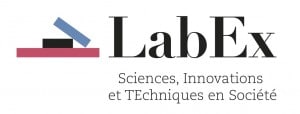2024
Journal Articles
School buildings as performative machines: the new architectural devices of control Journal Article
In: Social & Cultural Geography, 2024.
2023
Books
Architecture after Covid Book
Bloomsbury Publishing, 2023, ISBN: 9781350271067.
2022
Journal Articles
Reviewing topics of COVID-19 news articles: case study of CNN and China daily Journal Article
In: Aslib Journal of Information Management, vol. 75, iss. 2, pp. 407-429, 2022, ISSN: 2050-3806.
2021
Journal Articles
Expanding agency: The mapping of architectural design discourse in Indonesia's academic publications Journal Article
In: ARSNET, 2021, ISSN: ISSN 2777-0710.
Book Chapters
In: Kastenhofer, Karen; Molyneux-Hodgson, Susan (Ed.): Community and Identity in Contemporary Technosciences, vol. 31, pp. 41-64, Springer International Publishing, Cham, 2021, ISBN: 978-3-030-61728-8.
2020
PhD Theses
Circuits alimentaires alternatifs et transition du régime de "provision". Etude sociotechnique dans le contexte francilien. PhD Thesis
Institut agronomique, vétérinaire et forestier de France, 2020.
2018
Journal Articles
Smart cities, social media platforms and security: online content regulation as a site of controversy and conflict Journal Article
In: City, Territory and Architecture, vol. 5, no. 20, 2018.
2016
Proceedings Articles
SMS: a linked open data infrastructure for science and innovation studies Proceedings Article
In: Science and Technology Indicators, pp. 106-114, 2016.
Technical Reports
Towards an open infrastructure for Science, Technology and Innovation data Technical Report
Vrije Universiteit Amsterdam 2016, (https://www.oecd.org/sti/186%20-%20VanDenBesselaar%20et%20al_RISIS.pdf).
2015
Miscellaneous
Open data platform for knowledge access in plant health domain: VESPA Mining Miscellaneous
2015.
LIST OF SCIENTIFIC WORKS THAT HAVE USED CORTEXT MANAGER
(Sources: Google Scholar, HAL, Scopus, WOS and search engines)
We are grateful that you have found CorTexT Manager useful. Over the years, you have been more than 1050 authors to trust CorTexT for your publicly accessible analyzes. This represents a little less than 10% of CorTexT Manager user’s community. So, thank you!
We seek to understand how the scientific production that used CorText Manager has evolved and to characterise it. You will find here our analysis of this scientific production.
Browse documents by main topics
| What types of documents? |
|---|
| What types of documents? |
| 219 journal articles |
| 42 conference proceedings |
| 39 conference (not in proceedings) |
| 29 Ph.D. thesis |
| 29 online articles |
| 28 reports |
| 22 book chapters |
| 20 masters thesis |
| 11 workshop |
| 9 bachelorthesis |
| 8 book |
| 3 miscellaneous |
| 1 workingpaper |
| 1 proceedings |
| 1 manual |
| Main peer-reviewed journals |
|---|
| Main peer-reviewed journals |
| Scientometrics |
| I2D - Information, données & documents |
| Réseaux |
| Revue d’anthropologie des connaissances |
| PloS one |
| Journal of Rural Studies |
| Revue d'anthropologie des connaissances |
| Library Hi Tech |
| Research Policy |
| Energy Economics |






